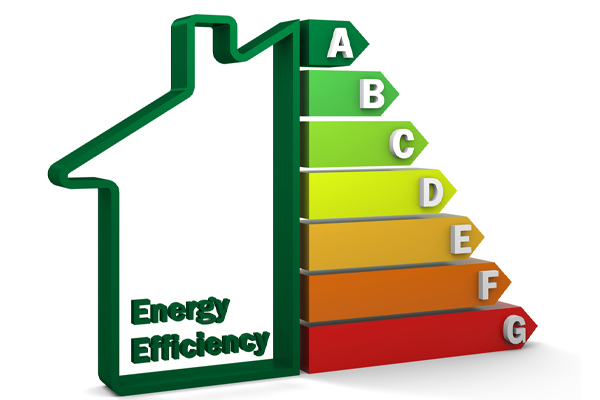 Often referred to as ductless heat pumps and mini-split systems, ductless HVAC systems can efficiently and quickly heat or cool the home.
Often referred to as ductless heat pumps and mini-split systems, ductless HVAC systems can efficiently and quickly heat or cool the home.
Unlike window AC systems, ductless HVAC only requires a minor wall modification for installation. This makes them far less susceptible to air leakage, and it also diminishes security issues, which are quite common for window ACs. In addition to being far less conspicuous than a traditional window air conditioner, ductless HVAC systems also provide quieter operation.
One thing that makes these units genuinely incomparable to other HVAC system types, however, is their extraordinary level of overall energy efficiency.
Why Is Residential Energy Efficiency So Crucial?
- Why Is Residential Energy Efficiency So Crucial?
- Ductless HVAC Systems: An Introduction
- Why Are Ductless Mini-Split Systems So Energy-Efficient?
- What Are Some Of The Benefits In Choosing A Ductless HVAC System?
- Improved Solutions To A Long-Standing Problem
- Ductless Mini-Splits: Supplemental Heating & Cooling For Forced-Air HVAC Systems
- Why Ductless HVAC Systems Are Better Than Window AC Systems
- Take A Look At One Of Our Ductless Mini-Split Installation Projects
- Get In Touch With Skylands Energy Service For All Your HVAC Requirements
You can cut your home energy bills significantly by improving your home’s overall thermal characteristics. Proper insulation and using a combination of energy-efficient practices can help. For example, when your home has adequate insulation, you will use less energy to cool your living environment down during the hot days of summer. Also, you can improve your energy efficiency by installing Energy Star-rated appliances, energy-efficient light bulbs, and by using common practices to limit your home’s overall electrical load.
Another method that can reduce your energy consumption is to take advantage of cutting-edge heating and cooling technologies. When it comes to energy-efficient HVAC systems, the ductless mini-split is unsurpassable.
Airflow
A ductless mini-split HVAC system can significantly increase all-around energy efficiency. The flow of air, heat, and indoor humidity levels are all controlled by an HVAC system. This type of system works to keep the interior of the home comfortable and dry. HVAC systems rely on air exchangers, heat recovery ventilators, heating, and ventilation systems for circulating the indoor air and eliminating excess moisture.
Indoor Air Quality
In addition to heating and cooling the home, HVAC systems also provide many secondary benefits. For instance, given that this equipment promotes proper air circulation, it helps distribute clean, fresh air throughout the building. Using mechanical ventilation to control indoor airflow keeps the indoor air refreshed.
These systems also help minimize and prevent humidity problems. High levels of moisture inside of the home can both create air quality concerns and exasperate them. HVAC can moderate indoor humidity, prevent condensation, prevent peeling paint, keep the windows and ceilings from becoming stained, and hinder pervasive odors and mold growth.
Property Value
Each of these benefits can have a positive impact on the overall value of your home. In real estate, homes that are energy-efficient stand out in the market, and they often have higher sales values. Renovations and other improvement projects can boost the value of your home – and this is undoubtedly the case for an HVAC system that’s been expertly installed.
A large portion of your energy costs come from heating and cooling your home. Therefore, having an energy-efficient HVAC system is vital if you want to reduce your home heating and cooling costs. It is no wonder why homeowners who install ductless systems have enjoyed the benefits that come with it.
Ductless HVAC Systems: An Introduction
 A ductless, mini-split heating, and cooling system is commonly used in residential and commercial environments.
A ductless, mini-split heating, and cooling system is commonly used in residential and commercial environments.
They work well for additions, offices, garages, and troublesome rooms that a traditional HVAC system can’t heat/cool properly. For example, these systems are excellent for finished attics when it isn’t possible to install the necessary ductwork.
Much like central HVAC systems, mini-split equipment has two primary components: an indoor unit and an outside condenser. It also has secondary components, including refrigerant tubing and cables for connecting the inside and external components.
System Sizes
The primary benefits of having a mini-split ductless system are the fact that these units are discrete and small, making them perfect for individual rooms of just about any size. Depending upon which model you choose, it’s possible to have as many as four separate indoor units connected to only one unit outside. Your cooling and heating needs will determine the number of units installed in your home.
Installation
A mini-split ductless system is also much easier to install than any other system type. It is only necessary to drill a very small hole in the wall to hook up the indoor and outdoor units and connect them. If needed, connecting conduits are available in varying lengths. This allows for a very high level of overall versatility. You can have your system heat or cool rooms and can have your compressor positioned outdoors in a very inconspicuous area.
Given that mini-split systems are so very efficient, they can help further limit the consumption of energy in any home that already has central heating and air installed. This allows homeowners to limit their reliance upon their central systems by installing a ductless unit in rooms that are frequently in use.
In comparison to other residential add-ons, mini-split HVAC systems provide the highest amount of versatility in terms of overall room aesthetics. Indoor units can be mounted flush against a corner wall or even suspended from a ceiling. There is also the option to install units on the floor. Irrespective of how a unit is positioned, many are at a depth of just several inches and often include a contemporary, high-gloss finish. A lot of advanced ductless systems are remote-controlled, thereby allowing users to adjust temperatures from across the room.
Why Are Ductless Mini-Split Systems So Energy-Efficient?
 Mini-split HVAC systems take a multi-dimensional approach to create higher levels of energy efficiency. Ductless systems do not present the same issues that are common among forced-air or conventional HVAC systems. According to many HVAC experts, forced air systems lose about 30 percent of all air being passed through ductwork. As such, these systems have a high rate of energy loss.
Mini-split HVAC systems take a multi-dimensional approach to create higher levels of energy efficiency. Ductless systems do not present the same issues that are common among forced-air or conventional HVAC systems. According to many HVAC experts, forced air systems lose about 30 percent of all air being passed through ductwork. As such, these systems have a high rate of energy loss.
Given that ductless mini-splits don’t rely on ducting for the transport and distribution of air, this isn’t an issue that homeowners must deal with. As such, this attribute helps make ductless mini-split systems much more energy-efficient.
Targeted Zoning Technologies
Cooling and heating a room all of the time does not make sense. Not everyone in your home is going to be using all of the rooms at all times. With a ductless HVAC system, you can target specific zones or the rooms within the home. These units operate independently of one another. Therefore, you can cool or heat a room that is actively in use. When leaving a room, you can easily turn it off, saving energy in the process.
Inverter Technologies
With ductless mini-split inverter technology, only the necessary amount of energy will be used by a mini-split ductless HVAC system to create and maintain the desired temperature indoors. These units do not mindlessly pump out cold or hot air into rooms. The compressor is engaged on a purely as-need basis, which makes the entire home more energy-efficient. Inverter technologiesInverter technologies manage extremes of temperature effectively, particularly when compared to old and outdated compressor designs. This allows for more comfortable and stable living and working environments throughout the home. It also sets the stage for far lower energy costs.
Programmable Settings
Mini-split ductless HVAC systems additionally include programmable thermostats and times. This is a set-it-and-forget-it solution that’s known to limit energy use and spending. Ductless systems do not have to be manually adjusted. They can turn themselves off and on according to preset times throughout each day. For instance, when you head out to work, your ductless mini-split will shut itself down. When you head back home, this system will already be on, and your home interior will be at the perfect temperature. Beyond providing a far higher level of overall energy efficiency, this can also greatly increase comfort levels within the home.
What Are Some Of The Benefits In Choosing A Ductless HVAC System?
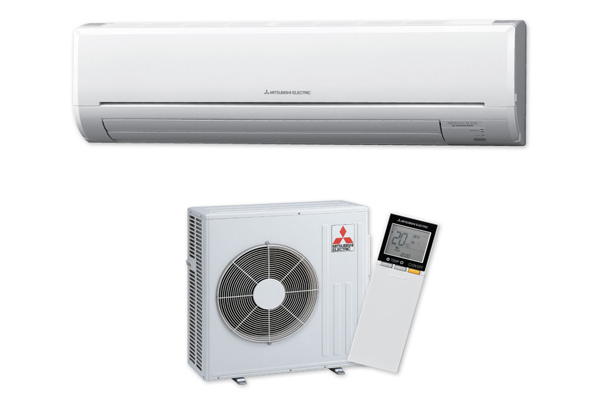 Mitsubishi ductless mini-split HVAC systems have completely revolutionized energy efficiency within the residential environment. This has made it the go-to option in HVAC systems for those who are looking for reliable functioning, given that this is exactly what the Mitsubishi brand promises and provides.
Mitsubishi ductless mini-split HVAC systems have completely revolutionized energy efficiency within the residential environment. This has made it the go-to option in HVAC systems for those who are looking for reliable functioning, given that this is exactly what the Mitsubishi brand promises and provides.
Mitsubishi mini-split systems are easy to install and only require a three-inch hole to be drilled into the wall to accommodate the conduit, which houses the power for this system. Mini-split heat pumps are perfect for new residential construction, but these systems can also be retrofitted for existing construction as well. Following are a few impressive benefits that a ductless HVAC system can provide, particularly one that’s been designed by the Mitsubishi brand.
Improved Solutions To A Long-Standing Problem
With traditional HVAC systems and heat pumps, the air is treated and then relayed through a vast system of ductwork. With a ductless mini-split HVAC system, however, the air is directly delivered to various rooms or zones throughout the building. The entire system is comprised of an indoor unit that needs access to electricity and requires mounting, and an outside condenser.
Business owners and homeowners can get a cost-effective way to replaced outdated systems that aren’t energy-efficient and that require a considerable amount of power. These systems can be installed in condos, on construction sites, in apartments, or in homes to improve specific portions of these buildings.
Ductless HVAC systems from Mitsubishi offer total and quiet control. You will have the ability to customize temperatures in each room throughout remote access and with the help of timers. One major benefit that sets the Mitsubishi brand of HVAC systems apart is the fact that these units offer whisper-quiet operation. These systems allow for peaceful and relaxing indoor conditions.
Homeowners who own ductless Mitsubishi HVAC systems know that their Mitsubishi mini-splits are smart investments. These HVAC systems use a lot less energy than traditional HVAC equipment, and they don’t diminish indoor aesthetics.
Ductless Mini-Splits: Supplemental Heating & Cooling For Forced-Air HVAC Systems
 Ductless mini-split HVAC systems can additionally be used to supplement other cooling and heating sources within your home. Given their discreet nature, a lot of homeowners are installing these systems in areas such as guest rooms, living rooms, and even hallways.
Ductless mini-split HVAC systems can additionally be used to supplement other cooling and heating sources within your home. Given their discreet nature, a lot of homeowners are installing these systems in areas such as guest rooms, living rooms, and even hallways.
You may have a central HVAC system that heats and cools your entire home. For instance, you might want to simply cool down your bedroom during the nighttime hours in the summer, without adjusting the temperatures of rooms that you aren’t using while sleeping.
No matter what its application is, a ductless mini-split HVAC offers energy savings from both an engineering perspective and via product design. Due to the fact that no ductwork is needed or used, a ductless mini-split isn’t going to have air leaks or issues with ducts that aren’t insulated.
Remember that much like all other equipment in the home, routine maintenance is essential. Air filters should be inspected and replaced regularly and when these are visibly dirty. If you aren’t sure, follow the recommendations of the manufacturer concerning how often filter cleaning and replacement should be performed.
For the component outdoors, check to ensure that no foliage or debris is blocking this unit. It needs unobstructed and steady airflow.
Why Ductless HVAC Systems Are Better Than Window AC Systems
When deciding between a ductless mini-split system and a window air conditioner, you have to be sure to consider the basic differences between these two types of equipment.
Location
As an example, a window unit must be installed in a fixed area. It will take up the entire window and it won’t be very attractive to look at. Moreover, this equipment is noisy and requires a lot of energy.
On the other hand, a ductless mini-split is far more efficient at heating and cooling an area. It requires just a single, small-sized hole for running wires through the wall to connect with the condenser outside.
Energy Use
Then, there’s obviously energy consumption and energy efficiency to think about. Ductless HVAC systems offer far more cost-effective operation throughout their entire lifespans. They also have significantly higher SEE ratings. This rating measures the efficiency of their heating and cooling operations, much like gas mileage for cars.
Air Quality
There’s a very vast range of benefits that ductless mini-split HVAC systems can provide. This will help you save cash by reducing your energy use. They will also improve the indoor air quality for your home. They’re easy to maintain and easy to install. More importantly, they’ll allow you to reduce your carbon footprint.
Zoning
The automatic zoning of these systems makes them ideal as each outside unit can create the desired temperatures in individual spaces. You don’t have to deal with extra coils, frustrating dampers, the problem of bypass ducts among other things.
Take A Look At One Of Our Ductless Mini-Split Installation Projects
Case Study: Clark Mitsubishi Ductless Installation In Sewaren NJ
Get In Touch With Skylands Energy Service For All Your HVAC Requirements
For a trusted and reliable HVAC service that offers high-quality cooling and heating solutions, get in touch with Skylands Energy Service today. We provide expert HVAC services and solutions at fair and honest prices. If you have an interest in learning more about ductless systems for your home, contact us today. Our team of NATE-certified and friendly technicians are knowledgeable and experienced enough to find the ideal ductless system for every home.
We provide many additional home comfort services such as furnace repair services, HVAC tune-ups, and more. Better still, our HVAC experts are personable, polite, and friendly. We make every effort to ensure that your service visits are always pleasant. Set up a free consultation by calling us now. Call Skylands Energy Service today!
Contact us now at (908) 707-1776 to find out more!
The post Why Residential Energy Efficiency Should Be Important To You appeared first on Skylands Energy.
from Skylands Energy https://www.skylandsenergy.com/energy-efficiency/residential-energy-efficiency/
via IFTTT
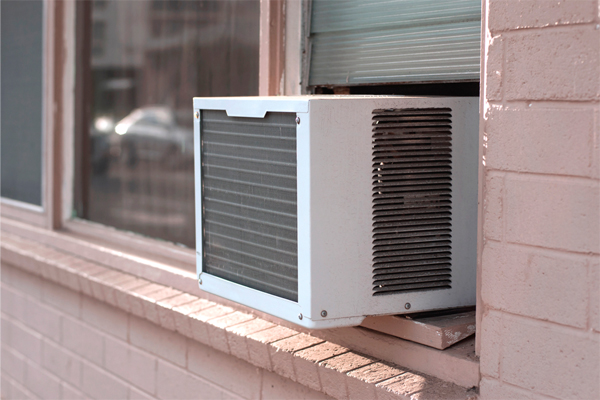 Those who own a home without HVAC ductwork will need to choose between getting a ductless air conditioner or a window air conditioner to endure the summer heat.
Those who own a home without HVAC ductwork will need to choose between getting a ductless air conditioner or a window air conditioner to endure the summer heat.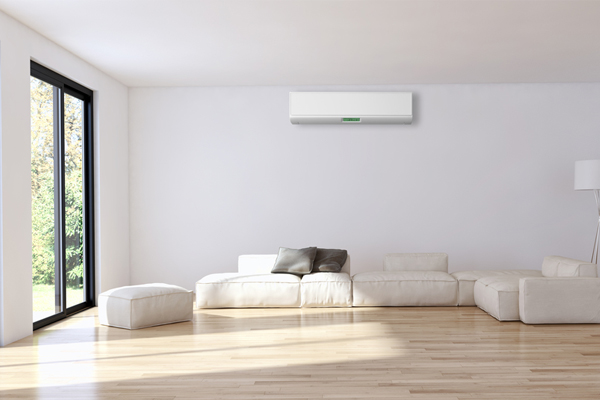 Here is a comparison of the two types of air conditioning systems.
Here is a comparison of the two types of air conditioning systems.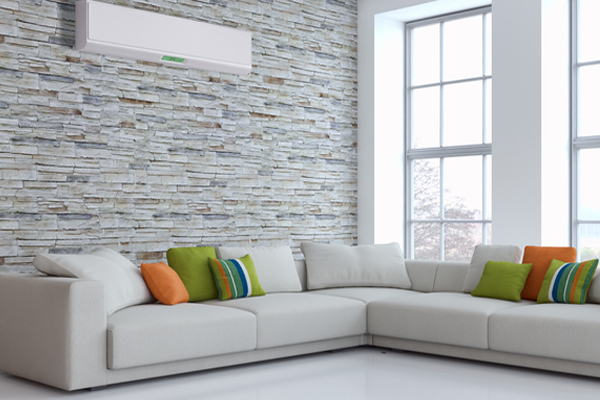 If you are still using a traditional HVAC system in your home, you may have experienced several frustrations with your heating and cooling system. Aside from the inefficient use of energy, old HVAC units may not provide the desired comfort and indoor air quality. Furthermore, they may be too noisy.
If you are still using a traditional HVAC system in your home, you may have experienced several frustrations with your heating and cooling system. Aside from the inefficient use of energy, old HVAC units may not provide the desired comfort and indoor air quality. Furthermore, they may be too noisy.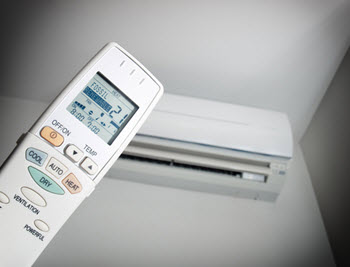 Ductless HVAC systems do not require any ductwork. They are designed to deliver efficient and flexible heating and cooling inside your home or inside a specific room in your home. It includes an outdoor unit and an indoor unit. The outdoor unit is installed outside the home, usually at ground level, and is connected to the indoor unit by a refrigerant line and electrical wiring through a hole in the wall. Many indoor units can connect to one outdoor unit.
Ductless HVAC systems do not require any ductwork. They are designed to deliver efficient and flexible heating and cooling inside your home or inside a specific room in your home. It includes an outdoor unit and an indoor unit. The outdoor unit is installed outside the home, usually at ground level, and is connected to the indoor unit by a refrigerant line and electrical wiring through a hole in the wall. Many indoor units can connect to one outdoor unit.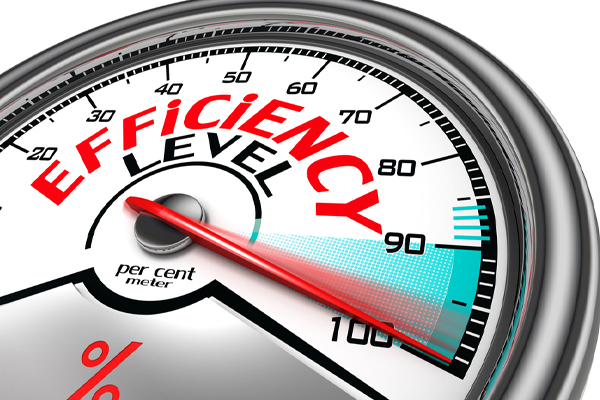 The mini-split technology allows an HVAC system to deliver targeted heating or cooling. It uses smart technology that intelligently adjusts heating or cooling output to provide a constant temperature in a room. It contains a microcontroller that can sample the air and adjust the speed of the compressor accordingly.
The mini-split technology allows an HVAC system to deliver targeted heating or cooling. It uses smart technology that intelligently adjusts heating or cooling output to provide a constant temperature in a room. It contains a microcontroller that can sample the air and adjust the speed of the compressor accordingly.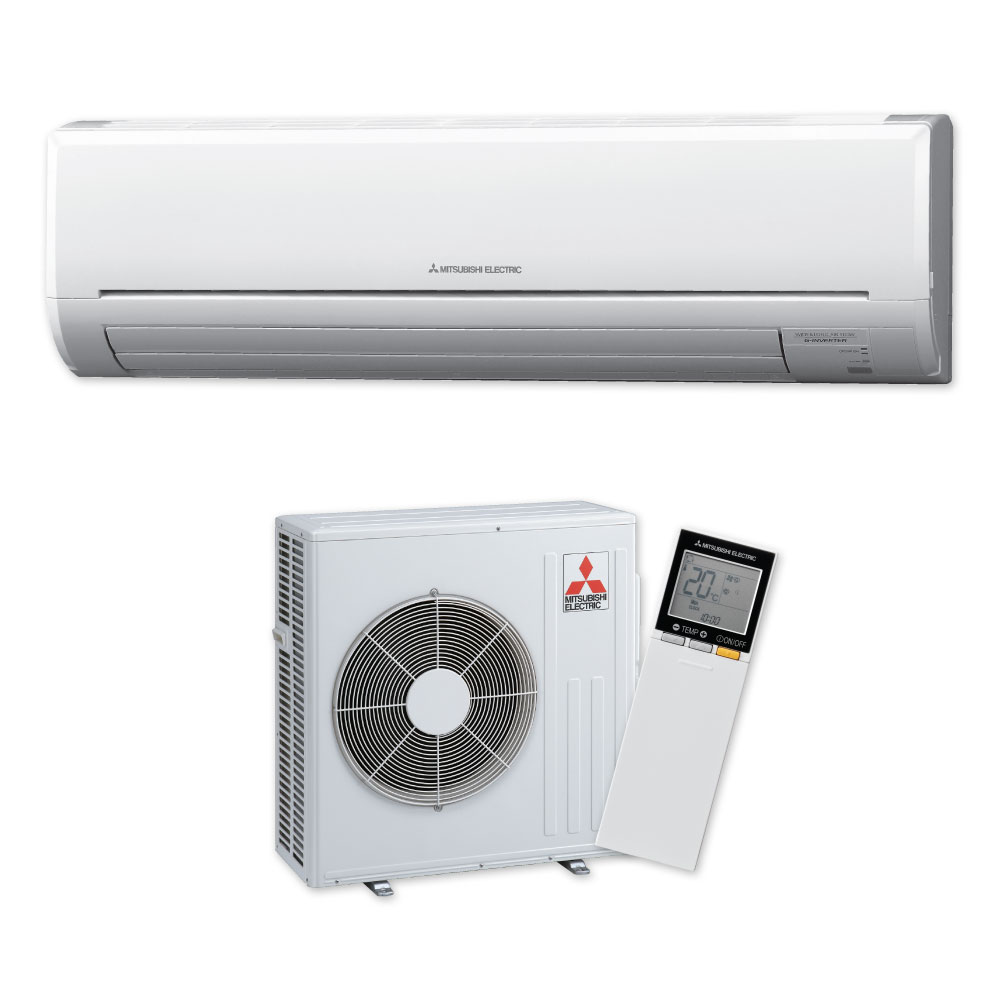 Fixed speed compressors are a bit inefficient when it comes to delivering cool air inside a home. These compressors cycle the unit on and off whenever the temperature dips below a target temperature. This can lead to undesirable temperature fluctuations that can cause energy inefficiency and higher energy bills.
Fixed speed compressors are a bit inefficient when it comes to delivering cool air inside a home. These compressors cycle the unit on and off whenever the temperature dips below a target temperature. This can lead to undesirable temperature fluctuations that can cause energy inefficiency and higher energy bills.
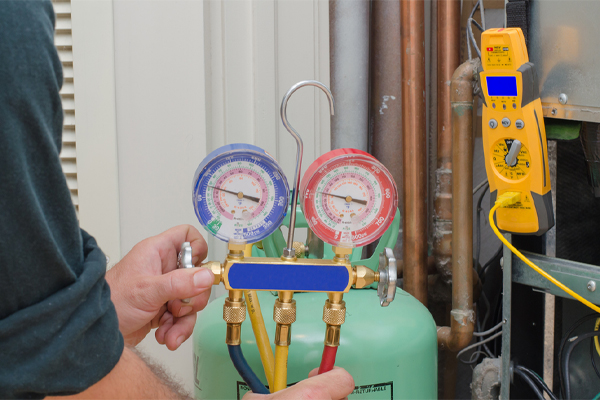 The refrigerant is a chemical compound that cools down the air. To cool down a room, the AC unit takes warm air in from the interior of a home and expels the air out. It does this while pulling air in and cooling it down as it passes through the coils. If you have a refrigerant leak, the cooling capacity of the AC unit is reduced. It may no longer be able to cool down the room efficiently. The action of heat absorption and heat release become disrupted, causing the compressor to shut down too early, then turn on immediately afterward. What this means is that you might just be looking at a high-priced
The refrigerant is a chemical compound that cools down the air. To cool down a room, the AC unit takes warm air in from the interior of a home and expels the air out. It does this while pulling air in and cooling it down as it passes through the coils. If you have a refrigerant leak, the cooling capacity of the AC unit is reduced. It may no longer be able to cool down the room efficiently. The action of heat absorption and heat release become disrupted, causing the compressor to shut down too early, then turn on immediately afterward. What this means is that you might just be looking at a high-priced 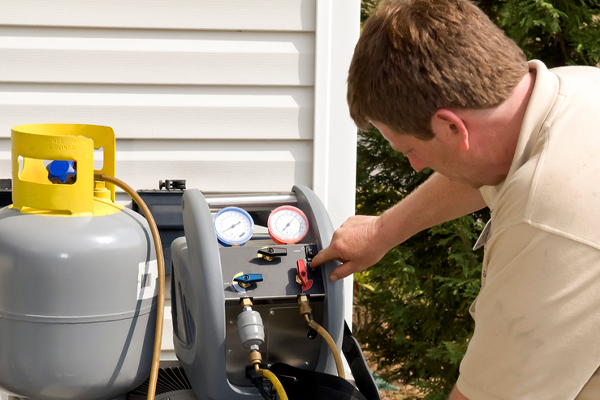 If the HVAC system in your home is acting up, do not try to fix it yourself. HVAC professionals have the training and the experience necessary to deal with HVAC situations.
If the HVAC system in your home is acting up, do not try to fix it yourself. HVAC professionals have the training and the experience necessary to deal with HVAC situations.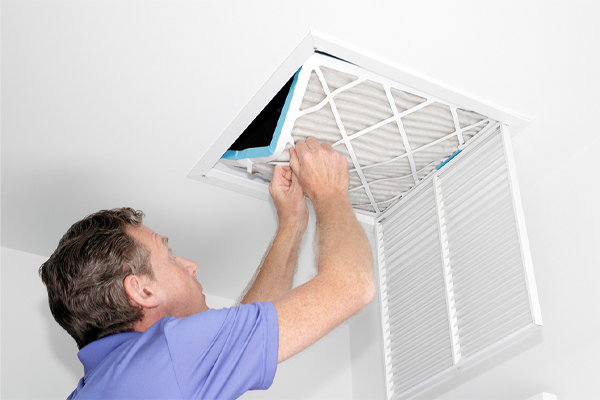 The air filters are an essential line of defense for keeping the air in your home clean. Over time, dirt and dust build up on air filters. That is why you must replace them on a regular basis. A clogged air filter leads to reduced quality of air, temperature fluctuations, and possible damage to other parts of your home HVAC system.
The air filters are an essential line of defense for keeping the air in your home clean. Over time, dirt and dust build up on air filters. That is why you must replace them on a regular basis. A clogged air filter leads to reduced quality of air, temperature fluctuations, and possible damage to other parts of your home HVAC system.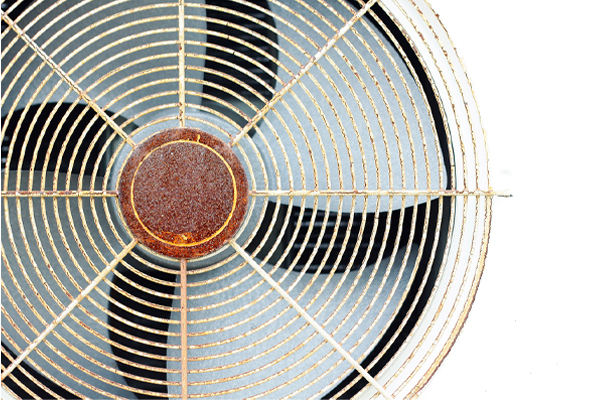 You may run into airflow problems if you have remodeled your home. The original
You may run into airflow problems if you have remodeled your home. The original 